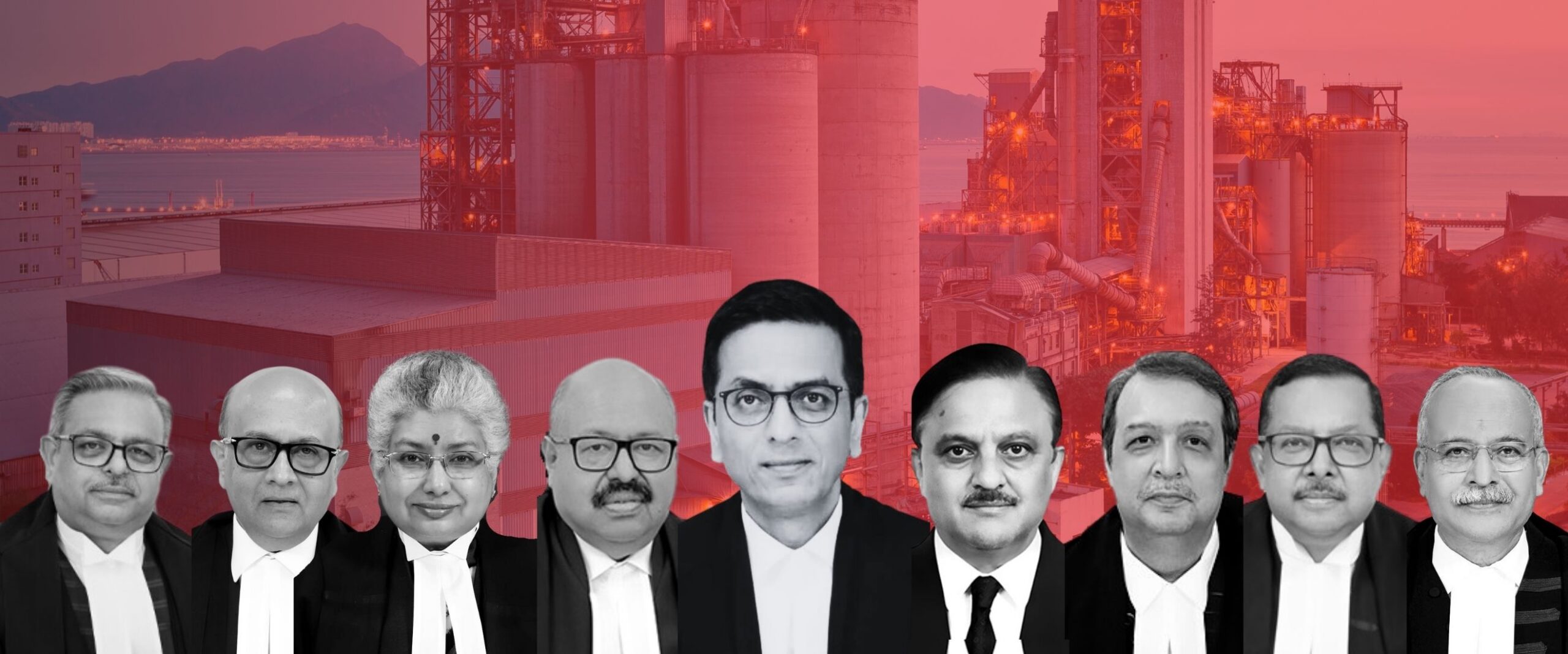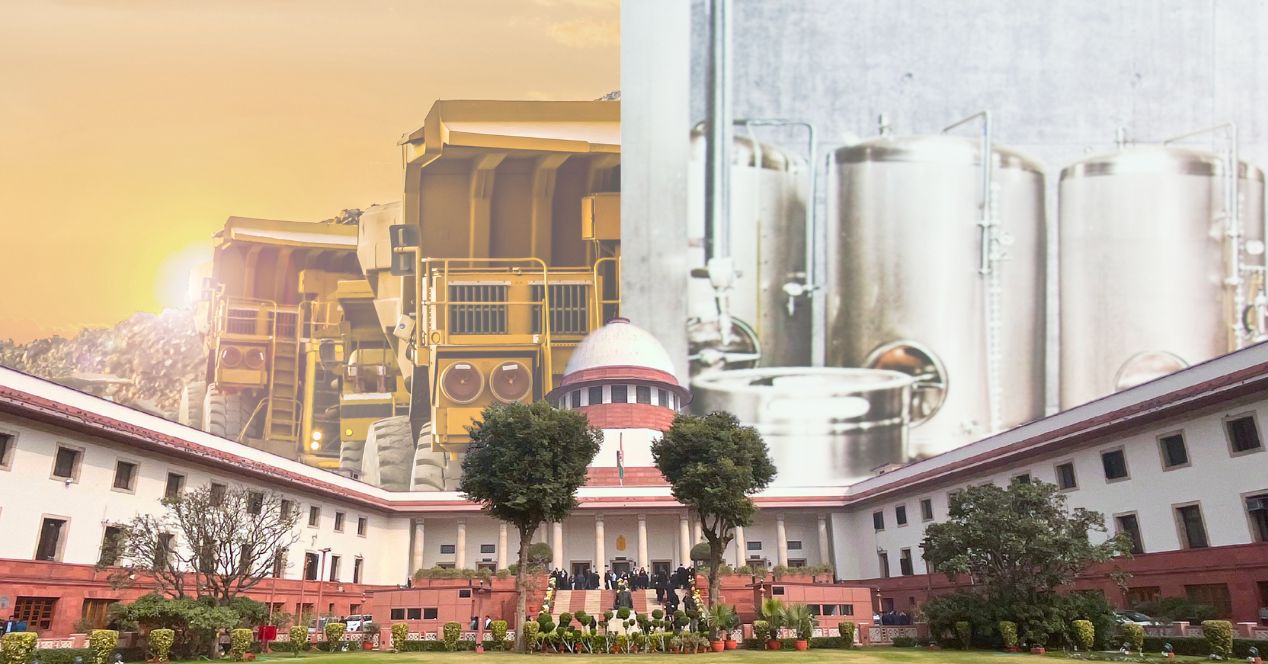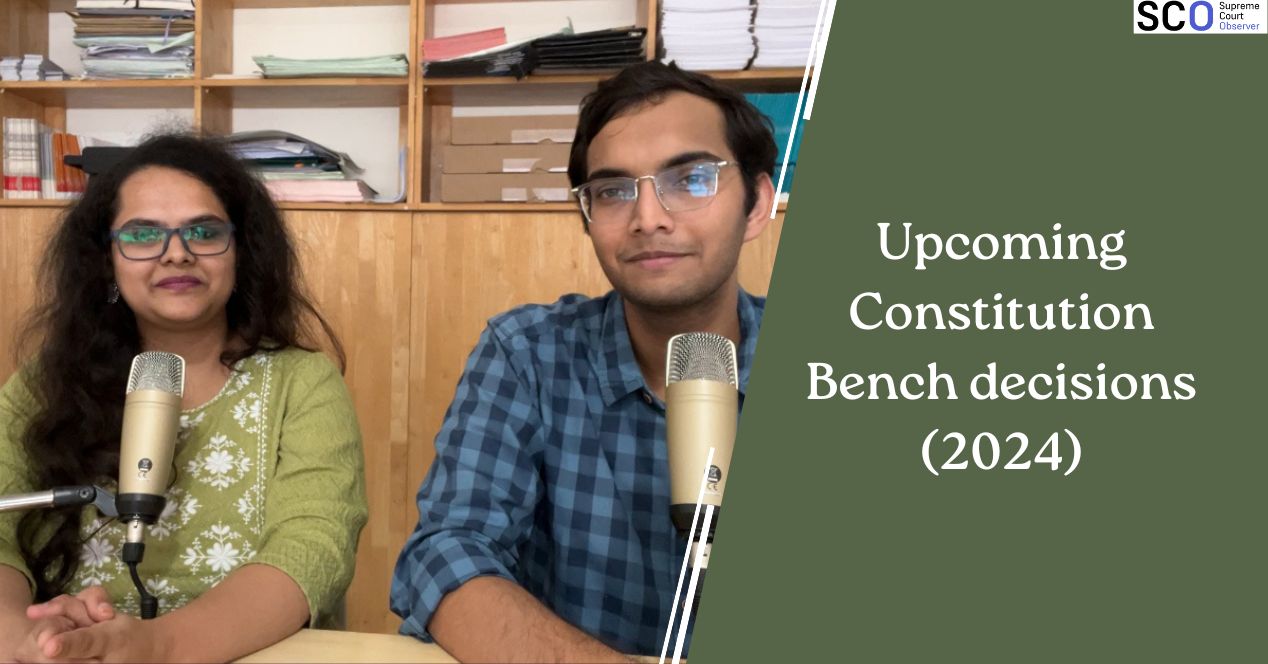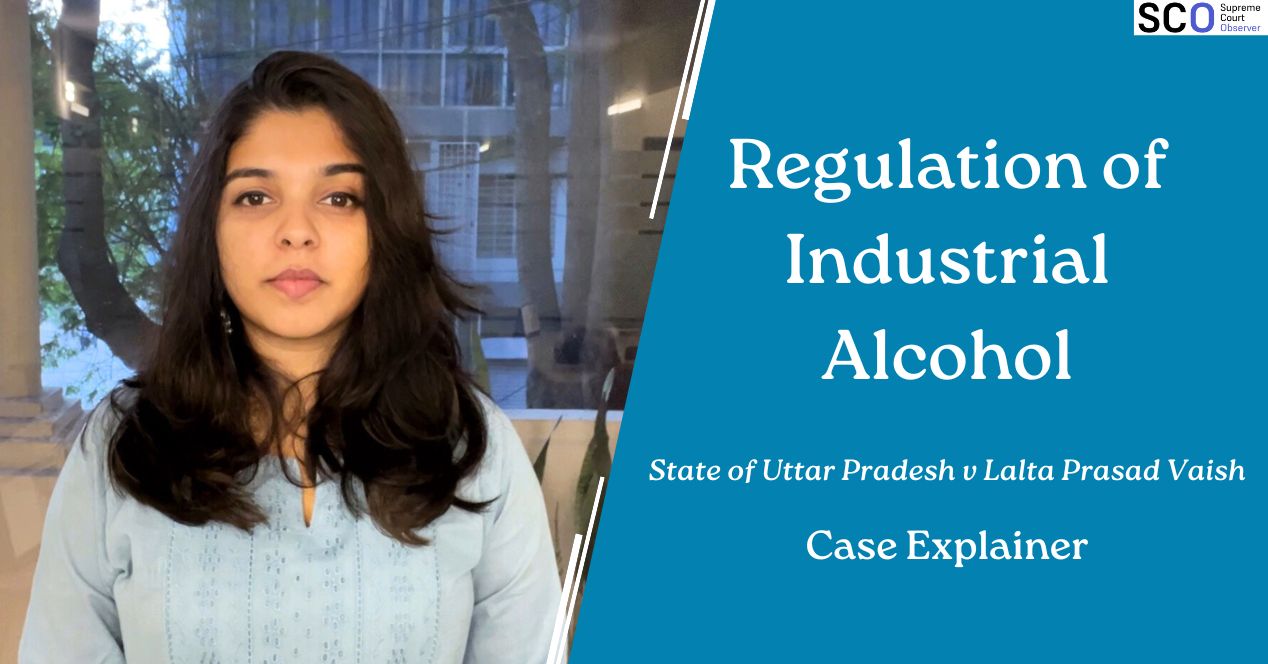Analysis
Supreme Court to decide states’ power to regulate industrial alcohol
The judgement is expected to settle the turf war between Union and states, with implications on revenue and public health regulation

Tomorrow, a nine-judge bench of the Supreme Court will deliver judgement on whether state governments have the power to regulate industrial alcohol. The arguments in the case took place over six days. They were centred on the scope of the Union’s power to legislate on industries under Entry 52 of the Union List, and the states’ powers to make laws on industrial alcohol under Entry 8 of the State List.
Petitioners have argued that the power to tax industrial alcohol is particularly crucial in the post-GST era as a significant source of income. They have also argued that if the power to regulate industrial alcohol goes to the Union, their hands will be tied when it comes to dealing with illegal consumption of industrial alcohol.
The Union has argued that the power to regulate industrial alcohol has always been theirs. The framers of the Constitution, the Union contended, intended for anything that concerns the “necessities of life” to be dealt with at a national and not provincial level.
Background
In Synthetics & Chemicals Ltd. v State of Uttar Pradesh (1990) the Supreme Court had held that “intoxicating liquors” only referred to potable (drinkable) alcohol, and that industrial alcohol (also called rectified or denatured spirit) was outside of the scope of a state government’s powers. Interpreting Entry 33 of the Concurrent List, the Court said that Parliament can, by declaration, permit the Union government to “cover the field” of industrial alcohol regulation.
On 27 October 2007, a Division Bench of the Supreme Court in State of U.P. v Lalta Prasad Vaish held that Synthetics & Chemicals had interpreted Section 18G of the Industries (Development and Regulation) Act, 1951 (Industries Act) to exclude the powers of the state legislature from Entry 33 of Concurrent list. Section 18G empowers the Union to control supply, distribution, price, etc. of certain articles in scheduled industry for securing equitable distribution and availability at fair prices.
The bench noted that the seven-judge bench in Synthetics & Chemicals had missed referring to Ch. Tika Ramji v State of Uttar Pradesh (1956), where the Court had noted that the state’s legislative competence under Concurrent list was not ousted by Section 18G. The Court finally noted that if the decision in Synthetics & Chemicals “was allowed to stand”, it would render Entry 33(a) of the Concurrent List “nugatory or otiose.”
On 8 December 2010, after noting that the views expressed by the seven-judge Bench in Synthetics & Chemicals had “been distinguished” in several subsequent decisions of the Court, a five-judge Bench finally referred the matter to a nine-judge Constitution Bench.
Before the nine-judge bench
States argued that Entry 8 of the State List was a distinct entry granting regulatory powers over intoxicating liquor to the states. In contrast, Entry 52 of the Union List was a broad power given to the Union over industries in general. As the states’ power was carved out of the Union general power, they argued that it could not be considered to be under the Union’s scope. The Union argued that its control over industries was embedded into the constitutional framework—this was to enable the Union to take control of key industrial resources in the case of a national crisis, an urgent need, or a long-term developmental plan.
The petitioner states also contended that, under the Industries Act, the Union must issue a “notified order” to occupy the field. Such an order, they said, does not exist. The Union’s counter to this was that the Industries Act serves as the instrument which expresses Parliament’s ‘declaration’ and with which the field is occupied. The issuance of an order or notification, the Union contended, was only an administrative action. The Union explained that though they have the power over industrial alcohol under the Industries Act, they had chosen to govern by forbearance, until they felt the need for active intervention—this did not mean that control was relinquished.
Semantics and objectives
A substantial part of the hearings went in discussing the intent behind adding the words “intoxicating liquor” in Entry 8 of the State List. Parties also debated the meaning of the words, and whether that meant just drinking alcohol or industrial alcohol as well. State governments argued that the framers imagined “intoxicating liquor” to mean all liquor, including alcohol produced for industrial purposes. They referred to various colonial laws, where intoxicating liquor was used as a catch-all phrase for all types of alcohol.
Petitioners also took the court through the technical process of producing industrial alcohol to drive home the point that all liquor was ‘intoxicating’, whether or not it was potable.
The Union government disputed this interpretation and argued that intoxicating liquor is any beverage that has an intoxicating effect, and specifically on humans. Entry 8 of the State List, they said, was meant to regulate the “vice of consumption of intoxicating liquor” and had nothing to do with liquor which was not drinkable.
As Solicitor General Tushar Mehta suggested during the hearings, the decision of the Supreme Court in this case will likely affect how we view the extent of the Union’s power over all industries. The decision will also clarify the “manifest intent” of the framers of the Constitution behind each Entry in the Union, State and Concurrent Lists.




